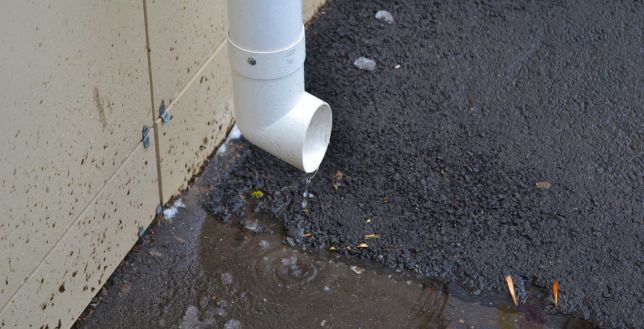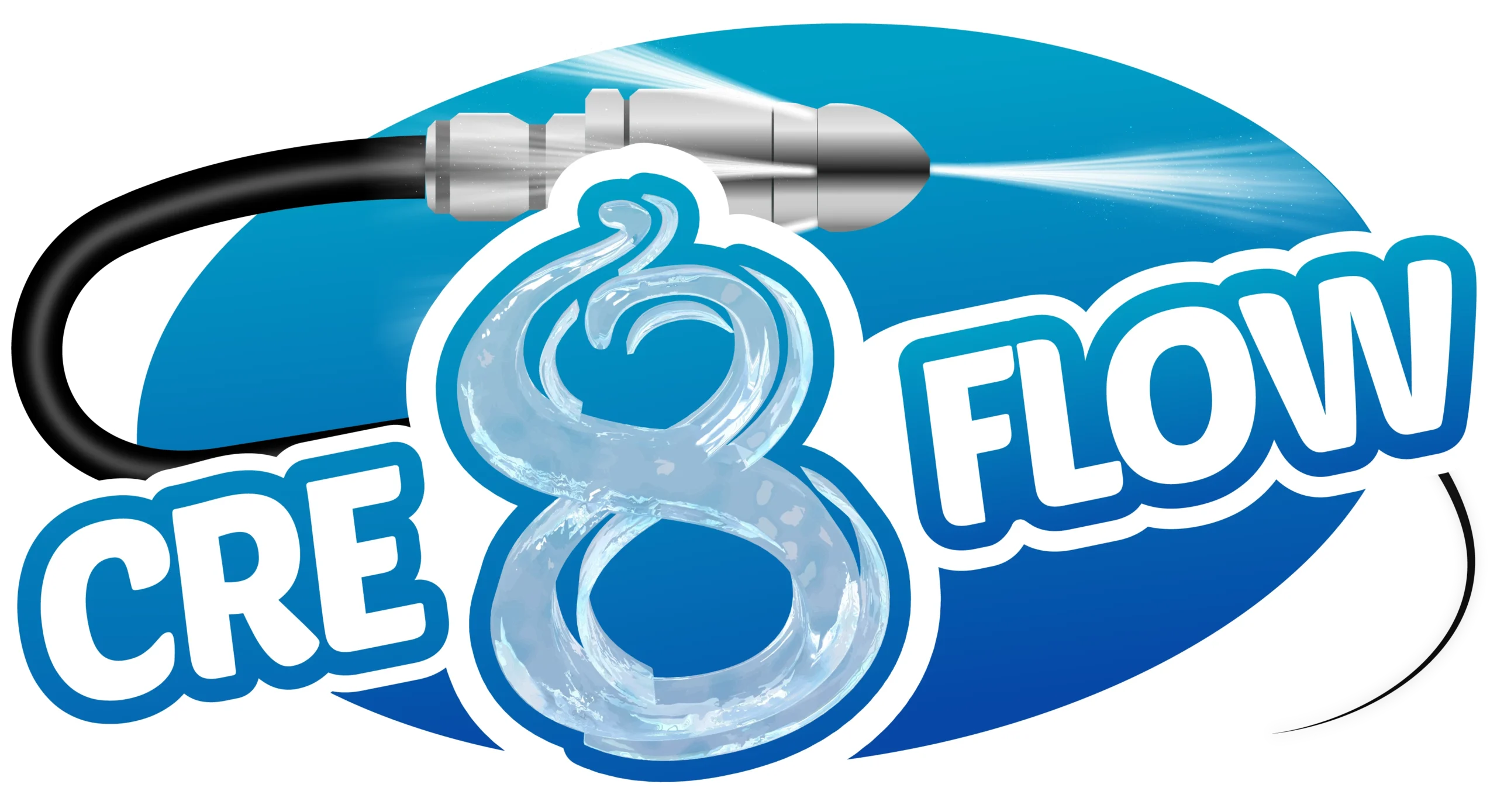DIY Tips: Inspecting, Clearing & Future Proofing Blocked Downpipes
A functional stormwater system is crucial for maintaining a structurally sound property. But when there’s a blockage in one of your downpipes, this can lead to water damage, overflowing gutters, and other critical complications.
This article provides a comprehensive guide on how to clear blocked downpipes by using simple DIY methods, while also providing suggestions on how to prevent the issues reoccuring in the future.
From inspecting and cleaning techniques to installing larger downpipes and employing professional tools, our aim is to give you the knowledge and guidance needed to effectively address a minor blocked downpipe issue.
For more difficult blocked downpipes and downpipe repairs, we strongly suggest engaging a professional blocked downpipe expert.

Key Takeaways
- Check for singular objects
- Try using a garden hose to try and clear the blockage
- Consider using professional tools to assist
- Regularly inspect and clean gutters and downpipes to prevent blockages
- Consider upgrading to larger downpipes to enhance water flow
- Trim back overhanging branches to prevent debris buildup
- Install gutter guards to prevent debris buildup
- Exercise caution when using chemicals
1. Check for singlular objects that may be causinge the blockage
The identification of obstructions caused by single objects is crucial in the process of clearing a blocked pipe or downpipe. Here are some practical steps to help you check for single objects causing blockages:
- Inspect the downpipe for any visible objects causing the blockage.
- Consider using a flashlight to have better visibility inside the downpipe.
- Use gloves to remove any gunk build up or debris that can be easily reached.
- Use a sturdy ladder to access the downpipe safely.
- Always use safety harnesses when working at significant heights. Especially when working on tricky or slippery roofs.
- Be cautious of potential hazards or sharp objects that may be causing the blockage.
By following these steps, you can effectively identify and remove single objects that are causing blockages in your downpipe. This will help restore proper water flow and prevent further damage to your gutter system.
Remember to exercise caution and use appropriate tools to ensure the safety of yourself and the downpipe.
2. Use a garden hose to try and clear the blocked downpipes
Using a garden hose is an effective method for clearing loose blockages in a downpipe.
- To begin, remove any bulky attachments from the end of the garden hose.
- Then, insert the hose into the top of the blocked downpipe.
- Use a fast stream of water to try and dislodge the blockage.
- It may be helpful to move the hose up and down, in and out of the downpipe to assist in clearing the blockage.
As the water pressure on a typical garden hose is generally low it is important to be patient and persistent as it may take some time for the blockage to clear.
3. Try using alternative specialist tools
Sometimes a typical garden hose isn’t enough and you may still not want to contact a professional drain cleaner to get the job done. In these circumstances, you’ll most likely need to attend your local hardware store and purchase the right tools for the job.
There a three main tools that we can recommend and they offer different approaches to dislodging the blockage and be more or less effective in various situations.
Drain rods
These long, flexible rods can be inserted into the downpipe to push or twist the blockage loose. They often come with attachments that can help navigate bends and corners. Ensure that the rods are sturdy and properly secured to avoid causing damage to the pipe or downpipe.
Hand-held plumbers snake or augers
This tool is similar to a drain rod but is designed specifically for clearing blockages in pipes. It has a coiled wire that can be inserted into the blocked downpipe and rotated to break up the blockage. Use caution to prevent scratching or damaging the downpipe.
Gutter vaccum (vac)
A gutter vacuum is designed to suck out debris from gutters and downpipes. They are equipped with long, flexible hoses that can reach into the downpipe and remove blockages. Renting or borrowing a gutter vac can be a convenient solution for stubborn blockages.
When using alternative tools, always follow the manufacturer’s instructions and exercise caution to avoid causing damage to the downpipe or gutter system.
4. Regular Inspection and Cleaning of Gutters
The regular inspection and cleaning of gutters is essential in helping prevent downpipe blockages and maintaining their functionality.
It is recommended to inspect gutters and downpipes regularly for debris and to identify any opportunities for downpipe repairs.
Leaves, twigs, clumps of dirt or other debris build up should be removed from the gutters and downpipes using a brush or hose. It is important to check for any signs of damage or leaks in the gutters and downpipes.
5. Installing Larger Downpipes
To enhance water flow and minimise the risk of blockages, consider upgrading and replacing the entire downpipe to a larger one.
Larger downpipes have a greater capacity to transport water, reducing the likelihood of clogs caused by debris accumulation.
When determining the appropriate size for your downpipes, it’s best to consult with a professional to ensure the optimal downpipe configuration and performance.
Installation of larger downpipes involves replacing the existing ones with ones that have a wider diameter. This allows for better water flow and reduces the risk of blockages.
It is important to regularly inspect and clean the larger downpipes to maintain their effectiveness.
Upgrading to larger downpipes may involve some cost, but the benefits of improved water flow and reduced maintenance outweigh the investment.
6. Trimming Back Branches
To effectively prevent debris from accumulating in your gutters and downpipes, it is crucial to address the issue of overhanging trees and branches by trimming them back.
Here are three key reasons why trimming back branches is important:
- Preventing debris buildup: Overhanging branches can drop leaves, twigs, and other debris onto your roof, which can then find its way into your gutters and downpipes. By trimming back these branches, you can significantly reduce the amount of debris that falls onto your roof and ultimately prevent blockages in your drainage system.
- Promoting proper water flow: Overhanging branches can obstruct the path of rainwater as it flows down your roof and into your gutters. By trimming back these branches, you allow for unobstructed water flow, reducing the likelihood of water overflowing from your gutters and causing damage to your home’s foundation.
- Enhancing tree health: Regularly trimming back branches helps to promote the overall health and vitality of your trees. By removing dead or diseased branches, you can prevent the spread of pests and diseases, improve the tree’s structure, and encourage new growth.
7. Installing Gutter Guards
Installing roof gutter guards around the roof are effective preventative measures for debris buildup and maintaining the cleanliness of your gutters and downpipes. Gutter guards are designed to keep leaves, pine needles, twigs, and other debris out of your gutters, allowing water to flow freely and reducing the risk of blockages.
There are various types of gutter guards available in the market, so it’s important to research and choose one that is compatible with your existing gutters and downpipes. Once you have selected the appropriate gutter guard, follow the manufacturer’s instructions for installation.
It is also crucial to regularly clean and maintain the gutter guards to ensure their effectiveness. If you are unsure about installing gutter guards yourself, consider professional installation to ensure proper installation and functionality.

8. Use Caution When Using Chemicals in Your Stormwater System
When considering options for clearing a blocked downpipe, it is important to exercise caution when using chemicals and to consider downpipe replacement as a last resort.
Chemicals can be effective in removing blockages, but they should be used with care due to their potential hazards. It is crucial to avoid using toxic substances that can harm you or the environment. Consultation with a professional before using any chemical solutions is highly recommended.
Additionally, downpipe replacement should only be considered after evaluating the severity of the blockage and the condition of the downpipe. Replacement should be a last resort, chosen when all other methods have been exhausted. It is advisable to seek the assistance of a professional to ensure proper installation and functionality of the new downpipe.
Conclusion
In conclusion, maintaining a clear and functioning downpipe is crucial for a well-maintained drainage and stormwater system.
By regularly inspecting your stormwater drains and cleaning gutters, trimming back branches, installing gutter guards, and checking for blockages, homeowners can help effectively clear blocked stormwater drains and downpipes and prevent major issues occuring in the future.
If you’re still struggling to clear a blocked pipe, simply contact the friendly team at Cre8flow. We offer quality and guaranteed workmanship and free quotes on all jobs.
Frequently Asked Questions
Can I Use a Pressure Washer to Clear a Blocked Downpipe?
Using a pressure washer or water jetter to clear a blocked downpipe is not recommended. The high pressure may damage the downpipe or push the blockage further into the system. It is advisable to use alternative methods or seek professional assistance.
How Often Should I Clean My Gutters and Downpipes?
Regular inspection and cleaning of gutters and downpipes is essential to prevent blockages. It is recommended to clean gutters and downpipes at least twice a year, or more frequently if there is heavy debris or tree coverage in the area.
What Are the Signs of a Damaged Downpipe?
Signs of a damaged downpipe include visible cracks, rust, or corrosion, water leaks or overflow, discoloration or staining on the downpipe, and uneven or sagging sections. Prompt repairs or replacement are recommended to prevent further damage.
Are Gutter Guards Effective in Preventing All Types of Debris From Entering the Gutter System?
Gutter guards can effectively prevent most types of debris from entering the gutter system, reducing the risk of blockages. However, it is important to choose a gutter guard that is compatible with your existing gutters and downpipes for optimal effectiveness.
Can I Use a Drain Cleaner to Clear a Blocked Downpipe?
Using a drain cleaner to clear a blocked downpipe is not recommended. Caustic chemicals can be harmful and may damage the downpipe or the environment. Consult with a professional and consider downpipe replacement as a last resort.
